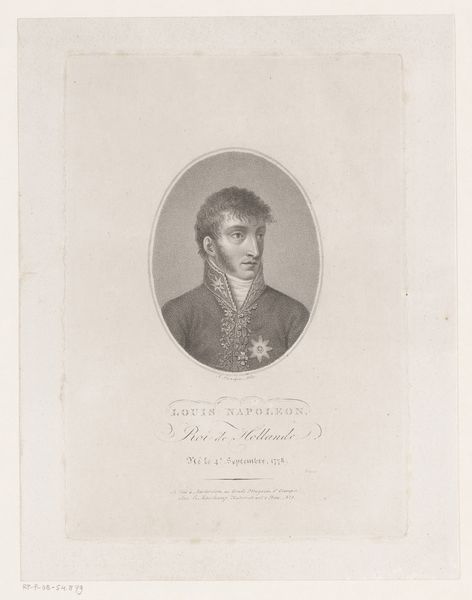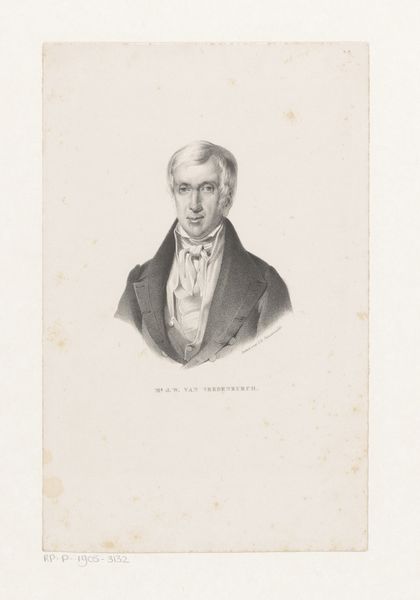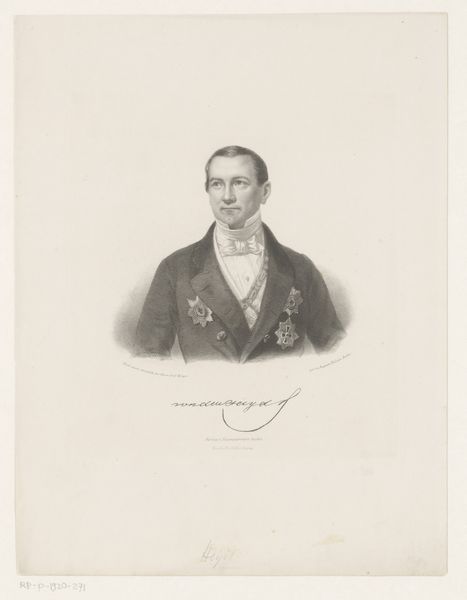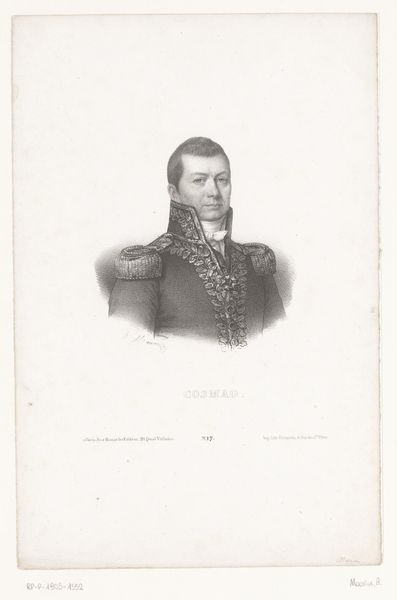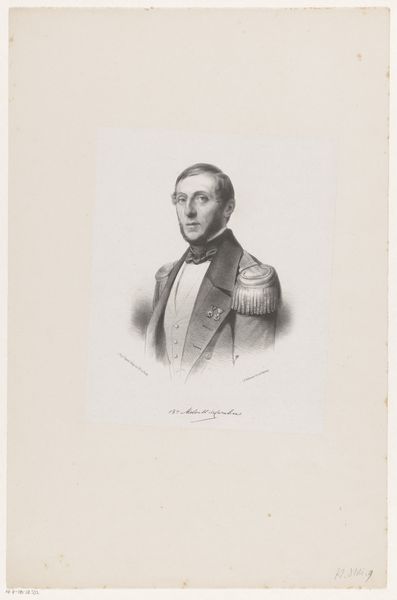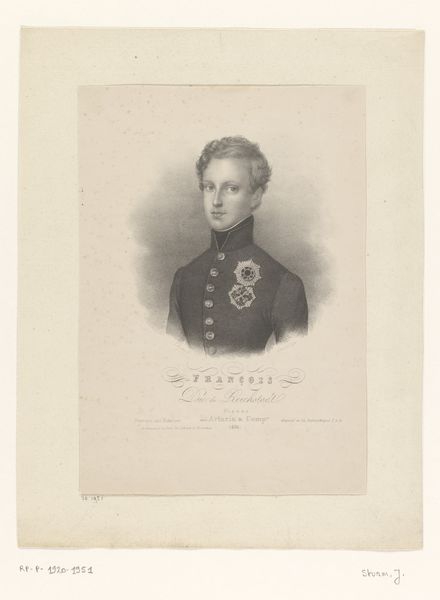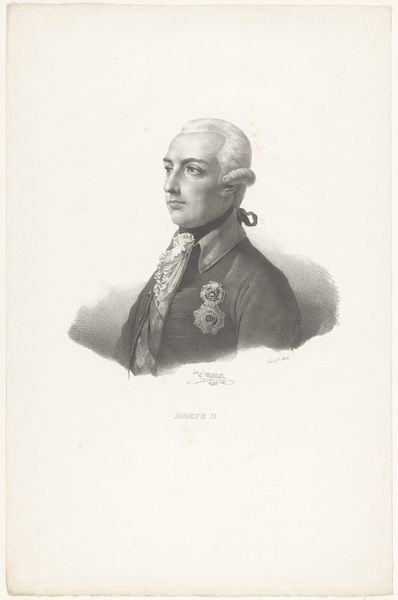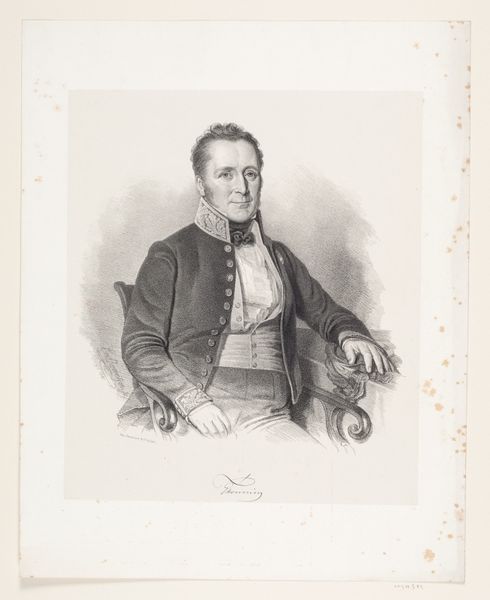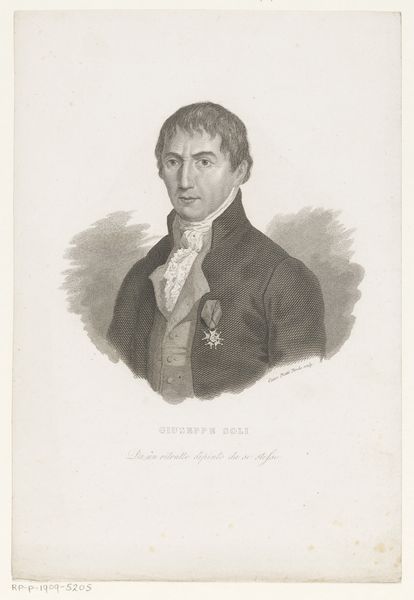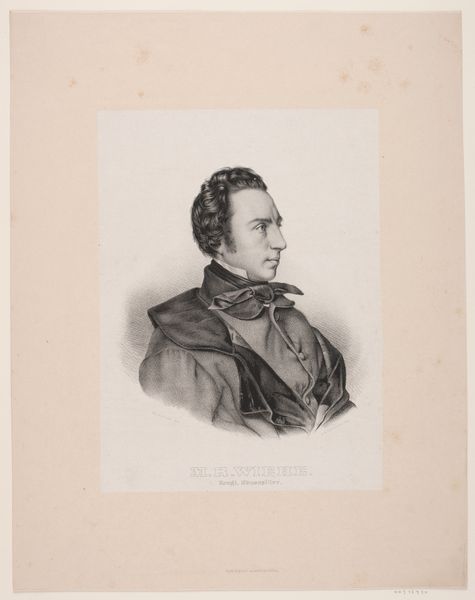
drawing, engraving
#
portrait
#
pencil drawn
#
drawing
#
pencil sketch
#
academic-art
#
engraving
#
realism
Dimensions: height 257 mm, width 201 mm
Copyright: Rijks Museum: Open Domain
Curator: Here we have a portrait of Pieter Merkus, Governor-General of the Dutch East Indies from 1841 to 1844. The work dates from 1844 to 1863, an engraving over a pencil sketch. Editor: He strikes me as rather severe. The composition is very frontal, and there's a certain austerity about his gaze and the muted palette. But then you notice the elaborate details on his jacket— the intricate floral designs almost soften the impact. Curator: That elaborate coat speaks volumes, doesn't it? These official portraits were tools to project power and legitimacy, in this case, to both the European audience and those governed in the East Indies. Editor: Exactly. Those meticulously rendered floral patterns and decorations weren't merely ornamental. They are packed with meaning and convey wealth, status and the authority he wants to project. They also function as emblems of his achievements and standing within the colonial structure. Curator: And that’s where the cultural context comes in. It was vital that such images presented an image of strength and civilization. They would be seen across Europe and the colonies, so the visual language had to be persuasive. There’s always a performative element in this type of official art, of course. Editor: I think the restraint is important here too. Yes, the coat is embellished, but it avoids ostentatious excess. There is a cool and contained tone, even an aloof quality, that keeps this very formal. We read those messages instantly. Curator: Yes. The lack of color concentrates the impact on the engraving itself. Consider the socio-political implications too; his policies directly affected the lives and economies of the indigenous people under Dutch rule. The image promotes the image of the governor’s control in these crucial regions. Editor: Looking at the overall effect, beyond just a historical figure, I see a study in control and how people have manipulated their likeness in political service for centuries. The carefully selected images have a continuous hold on cultural memory and project intended ideologies over the decades. Curator: Ultimately, this work speaks volumes about the function of imagery in maintaining colonial power dynamics. It prompts us to interrogate these visual narratives.
Comments
No comments
Be the first to comment and join the conversation on the ultimate creative platform.
